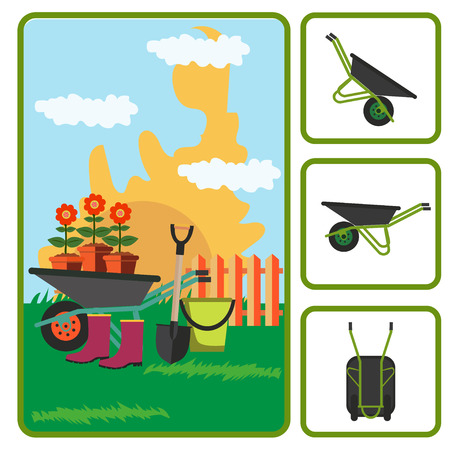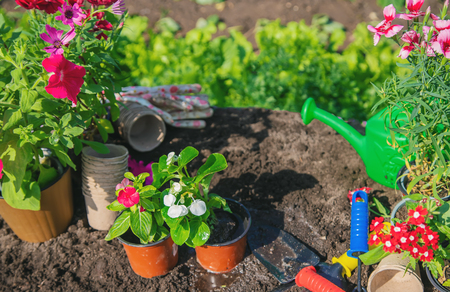Assessing Your Gardens Early Summer Health
As July settles in, it’s the perfect time to give your garden a thorough health check. Early summer brings rapid plant growth—but also unique challenges like pests, diseases, and environmental stress. Regular scouting is essential to catch problems early before they get out of hand.
Tips for Scouting Your July Garden
Walk through your garden at least once a week, looking closely at both sides of leaves, stems, and even the soil surface. Use a notebook or your phone to jot down anything unusual you see—like yellowing leaves, chewed edges, or sticky residues. Early morning is ideal for scouting, as many pests are more active then and the lighting helps you spot subtle issues.
Identifying Common Pests and Diseases
In July, watch out for aphids clustering on tender shoots, squash bugs hiding under broad leaves, and tomato hornworms blending into foliage. Fungal diseases such as powdery mildew or blight can also appear during humid spells. Look for white powdery spots on leaves or dark, spreading patches.
Recognizing Signs of Stress
Wilting during the heat of the day isn’t always a cause for alarm, but persistent drooping or scorched leaf edges may signal underwatering or heat stress. Discoloration or stunted growth can indicate nutrient deficiencies or root problems. Take note if plants aren’t bouncing back after sunset or watering.
When to Take Action
If you notice minor pest damage or disease, remove affected leaves by hand and dispose of them away from your compost pile. For larger infestations or recurring problems, consider organic sprays or physical barriers. Address signs of stress with deep watering in the morning and mulching to retain moisture.
Staying observant and proactive in July will help keep your garden thriving all summer long.
Watering Wisely in the Summer Heat
July’s soaring temperatures can make or break your summer garden, so watering efficiently is crucial for keeping your plants healthy and productive. The secret to thriving gardens isn’t just about how much water you use—it’s about when and how you apply it. Here are some practical tips that fit right into a busy American summer schedule and help ensure you make every drop count.
Morning Routines: Timing Is Everything
The best time to water your garden is early in the morning, ideally before 9 a.m. This helps reduce evaporation, ensures water reaches plant roots, and gives foliage time to dry off—reducing the risk of fungal diseases. Setting up a routine—whether it’s hand watering or using a soaker hose on a timer—can make mornings less hectic while keeping your plants happy.
The Power of Mulching
Mulch acts as a protective blanket for your soil, helping retain moisture and regulate temperature during July’s hottest days. Organic mulches like shredded bark, straw, or grass clippings work wonders in preventing water loss. Spread a layer of mulch 2-3 inches thick around your plants (but keep it a few inches away from stems) for best results.
Benefits of Mulching
| Mulch Type | Moisture Retention | Weed Suppression | Soil Temperature Control |
|---|---|---|---|
| Shredded Bark | Excellent | Good | Good |
| Straw | Very Good | Excellent | Moderate |
| Grass Clippings | Good | Moderate | Poor |
Avoiding Water Stress: Signs & Solutions
Keep an eye out for common signs of water stress such as wilted leaves, stunted growth, or leaf scorch. Deep watering encourages roots to grow deeper, making plants more resilient during heat waves. Aim for long, infrequent watering sessions rather than daily shallow sprinkles. Consider grouping thirsty plants together and using drip irrigation systems to deliver water directly to the root zone with minimal waste.
Quick Tips for Efficient Watering in July:
- Test soil moisture: Stick your finger two inches into the soil; if it feels dry, it’s time to water.
- Avoid midday watering: Hot sun causes rapid evaporation and can scorch wet leaves.
- Capture rainwater: Use rain barrels to supplement your watering routine sustainably.
- Adjust for weather: Skip watering after heavy rain and increase frequency during heatwaves.
By mastering these watering techniques in July, you’ll set your early summer garden up for success—even through the hottest days ahead.

3. Feeding and Fertilizing for Midseason Growth
July marks a crucial point in the garden, where plants are shifting from their initial spring vigor into the heart of their growing season. This is the time when your veggies, herbs, and flowers need a bit of a nutritional boost to keep producing strong, healthy growth—and maybe even set you up for that second flush of blooms or harvest. But midseason fertilizing requires a gentle hand: too much can stress your plants or even do more harm than good, especially as the summer heat ramps up.
Choosing the Right Fertilizer
For most American gardens, a balanced granular fertilizer—something like a 10-10-10 or 5-10-5—is a safe bet for general feeding. For heavy feeders like tomatoes, peppers, and squash, look for formulas higher in phosphorus and potassium to encourage fruiting. Leafy greens will appreciate a little extra nitrogen for lush foliage. When it comes to flowers, annuals like petunias or zinnias benefit from regular feeding with a bloom booster formula every few weeks.
How to Apply Fertilizer in July
Apply granular fertilizers around the base of each plant and gently work them into the top inch of soil, taking care not to disturb roots. Water thoroughly after feeding to help nutrients reach plant roots and prevent “burn.” If using liquid feeds, dilute according to label instructions and apply directly to the soil on cool mornings or late afternoons—never during peak sun hours.
Avoiding Overfeeding During Hot Months
It’s tempting to give stressed plants an extra dose of fertilizer when July heat kicks in, but resist! Overfeeding can lead to salt build-up in the soil, burning sensitive roots and causing leaf tips to brown. Stick with recommended rates and schedules; if in doubt, less is often more during summer. Always monitor your garden’s response—yellowing leaves or stunted growth may signal the need for more nutrition, while lush but floppy growth could mean it’s time to ease up.
By staying mindful of your garden’s midseason needs and avoiding common pitfalls like overfertilizing, you’ll set your crops and flowers up for success throughout the rest of summer—and right into fall harvests or blooms.
4. Weed Management and Mulching
Keeping weeds in check is one of the most important July garden chores, especially as summer heat sets in. Weeds not only compete with your veggies and flowers for water and nutrients, but they can also harbor pests. The good news? You don’t need to spend hours pulling weeds on your hands and knees! Instead, try these effective, low-stress strategies that save time and protect your plants.
Low-Stress Weed Control Techniques
| Strategy | How It Works | Best For |
|---|---|---|
| Hand Pulling After Rain | Softer soil makes weeds easier to remove by the roots. | Small gardens or spot-weeding around delicate plants |
| Hoeing or Scuffling | Quickly slice young weeds at the soil surface before they set seed. | Larger beds and rows; dry days prevent weed regrowth |
| Smothering with Newspaper/Cardboard | Blocks sunlight and starves weeds beneath a mulch layer. | Paths, between rows, or prepping new beds |
| Organic Herbicides (Spot Use) | Natural options like vinegar-based sprays kill top growth. | Pavement cracks or stubborn perennial weeds (use sparingly) |
The Power of Mulching
Mulching is July’s secret weapon for weed control and moisture retention. A good 2-3 inch layer of organic mulch—like shredded leaves, straw, grass clippings (untreated), or bark—keeps sunlight from reaching weed seeds while maintaining steady soil moisture. This helps protect your plant roots during hot spells and means less frequent watering for you!
Tips for Effective Mulch Application:
- Avoid piling mulch against stems: Leave a little space to prevent rot.
- Refresh mulch as needed: In July, older layers may break down—top them off to maintain thickness.
- Choose the right mulch for your crops: Straw works great for veggie beds; bark or wood chips are perfect for perennials and shrubs.
A Simple July Mulching Routine:
- Weed the area first using your preferred method.
- Add a fresh layer of mulch 2-3 inches deep.
- Water thoroughly to help settle the mulch and lock in moisture.
Tending your garden in early summer doesn’t have to be overwhelming. With smart weed management and consistent mulching, you’ll enjoy healthier plants—and more time relaxing in your backyard sanctuary.
5. Harvesting and Pruning in July
July is a rewarding time for home gardeners, as many early summer crops are ready to pick and enjoy. Knowing what to harvest now and how to prune effectively can make all the difference in keeping your garden productive through the warmest months.
What to Harvest This Month
In most American gardens, July brings an abundance of vegetables like green beans, zucchini, cucumbers, and early tomatoes. Herbs such as basil, cilantro, dill, and mint are at their peak, offering fresh flavors for summer meals. If you have fruiting plants like strawberries or blueberries, check daily—berries ripen fast in the heat! For those growing greens like lettuce or spinach, harvest early in the day for crispness before the sun wilts them.
Pruning Tips for Continued Production
Pruning isn’t just about shaping your plants—it’s key to encouraging new growth and more harvests. For indeterminate tomato varieties, pinch off suckers that form between the main stem and branches. This focuses energy on fruit production instead of excessive foliage. For herbs like basil, regularly pinch back the tops just above a leaf pair to promote bushier growth and delay flowering. With squash or cucumber vines, remove any yellowing leaves or non-productive stems to improve airflow and reduce disease risk.
Harvesting Techniques
Use clean, sharp scissors or pruners when harvesting fruits and vegetables to avoid damaging plants. Pick beans and cucumbers every couple of days—they grow quickly and frequent picking encourages more production. When snipping herbs, take no more than one-third of the plant at a time so it continues to thrive throughout summer.
Keep Your Garden Thriving
With regular harvesting and smart pruning, your July garden can keep providing fresh produce well into late summer. These simple steps not only maximize your yields but also help maintain healthy, resilient plants during the hottest part of the year.
6. Supporting Pollinators and Beneficial Insects
Creating a thriving early summer garden isn’t just about tending to your veggies and flowers—it’s also about supporting the bees, butterflies, and good bugs that make it all possible. July is a perfect time to focus on garden practices that attract pollinators and beneficial insects, helping your plants flourish and keeping pests in check naturally.
Plant Choices That Attract Pollinators
If you want to see more buzzing and fluttering visitors, consider adding native flowers like coneflower, black-eyed Susan, bee balm, and milkweed. Herbs such as lavender, basil, oregano, and mint are not only tasty for you but are irresistible to bees and butterflies. Plant these in clusters so pollinators can easily spot them. Remember, diversity is key—mix up flower shapes and colors to appeal to a wide range of species.
Habitat Ideas for Good Bugs
Beyond food sources, pollinators and beneficial insects need places to rest and nest. Leave some small brush piles or let a patch of grass grow a bit wild. Hollow stems from last season’s perennials make excellent shelters for native bees. A shallow dish filled with pebbles and water gives thirsty pollinators a safe spot to drink on hot July afternoons.
Pesticide-Free Practices
Avoid using chemical pesticides in your garden whenever possible—these products can harm both pests and the helpful insects you’re trying to attract. If you have pest issues, try hand-picking or use natural solutions like neem oil or insecticidal soap sparingly.
Growing Together With Nature
Supporting pollinators and beneficial insects is an easy way to boost your garden’s health while giving back to the environment. These friendly garden practices not only help your July crops thrive but also create a lively, colorful space you’ll love spending time in all summer long.

